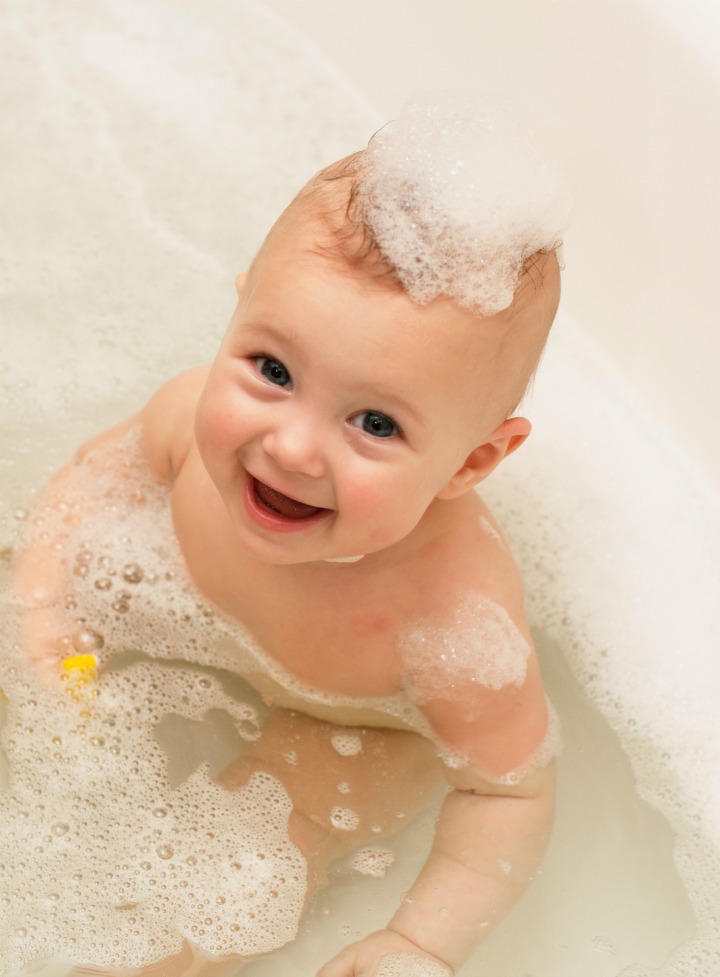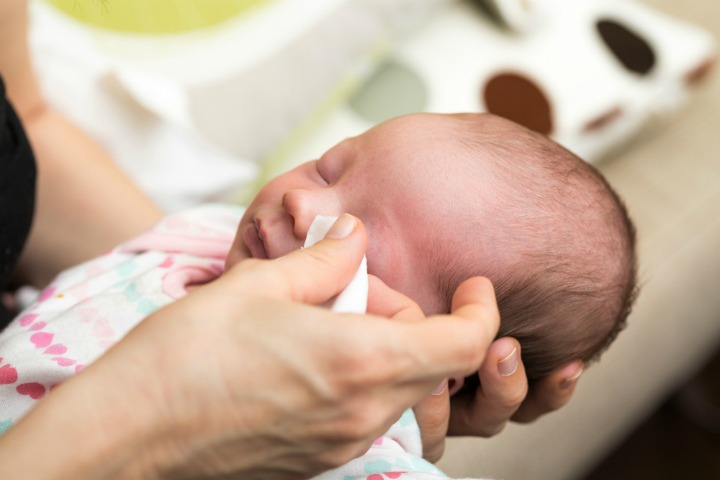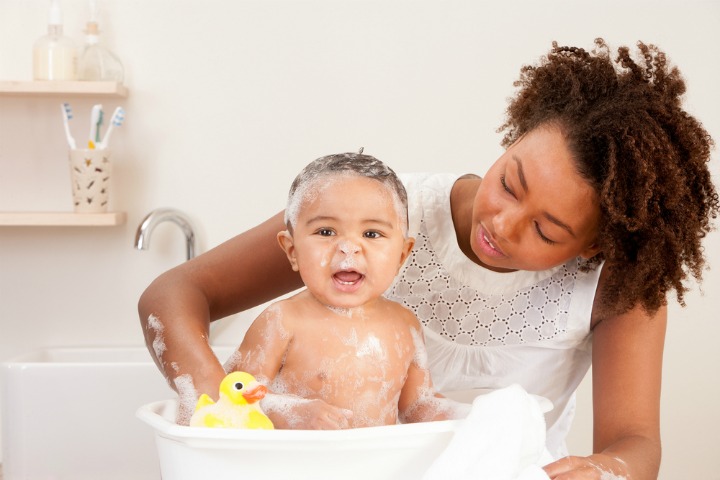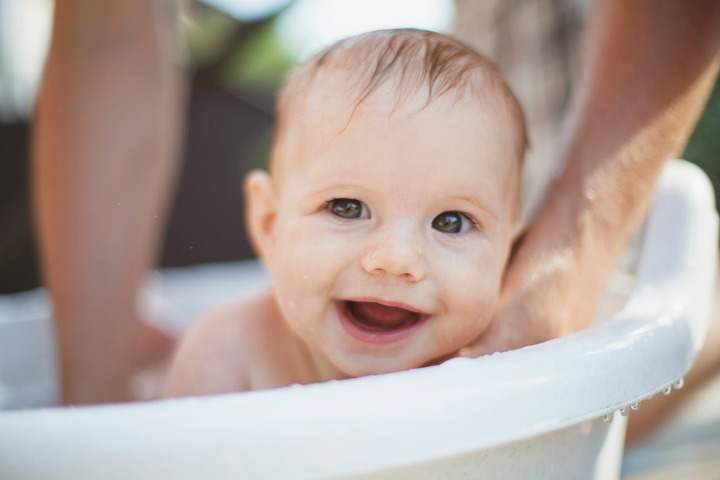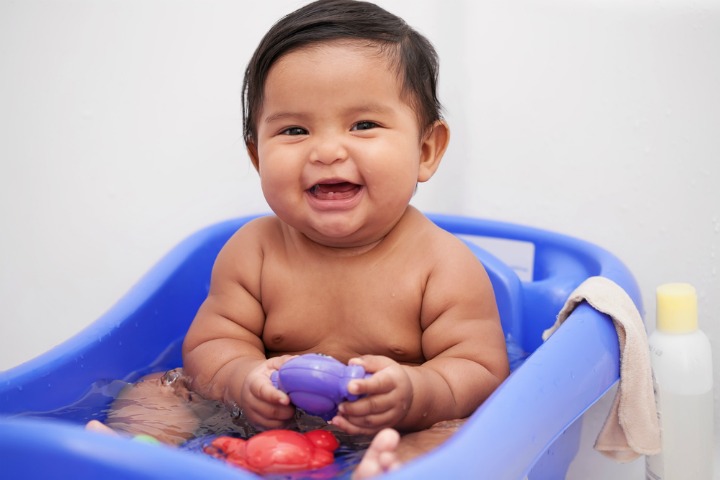How To Bathe Your Baby Safely & With Style
When you’re a new parent everything you do with your baby can feel a little scary at first, from feeding and burping to strapping their car seat in. Even something as simple as making sure they’re nice and clean can present a bit of a puzzle. A million questions suddenly present themselves in a situation which at first seems like it should be quite simple, but in reality is a delicate process to keep baby clean, content and completely safe. When it comes to bathing your baby there are a few different steps to follow, so to make sure you’re confident with the entire process take a little look at our pointers below.
Sponge bathe your baby
In your baby’s first week there’s no need to do anything more than a sponge bath to keep them clean and comfortable. In fact, many parents use a process called ‘topping and tailing’ for quite a while, which is suitable for those days when a bath may not be necessary. It involves using cotton wool and warm water on various parts of the body:
• With your baby in just a vest and nappy, wrap them in a towel and use a piece of cotton wool dipped in a little warm water to wipe from the nose outward across the eye. Use a fresh piece of cotton for each eye.
• Using another moistened piece of cotton wool, wipe around baby’s ears. Follow this same method for the face, neck and hands, gently drying afterwards with a towel.
• Remove the nappy and wash this area with cotton wool and warm water. Dry carefully, especially between the skin folds, and put on a clean nappy.
When to bathe your baby
Once the umbilical cord has fallen off and the surrounding area has healed you can begin giving your new-born a tub bath every few days. How often you bathe your baby is a matter of personal preference but there’s no need to bathe your baby every day until they’re crawling and getting particularly messy. Bathing every day can dry out your baby’s skin and often three times a week for the first year should be sufficient.
If your baby dislikes the water, then five minutes is long enough for a thorough washing. Of course, if the warm water soothes your baby feel free to take your time. It’s advised that you don’t bathe baby directly after feeding or when they’re tired and hungry. The room should be warm so that baby doesn’t get cold throughout the bathing process.
How to bathe your baby
First make sure the water is the optimum temperature for your baby; it should be warm, not hot, at a temperature of around 32 degrees Celsius or slightly warmer. Mix the water well so the temperature is even throughout. Before putting your baby in the water, leave their nappy on and clean their face, drying gently afterwards. Then wash their hair with plain water by supporting them over the bath and drying afterwards.
Remove their nappy, cleaning as you do, and lower them into the bath. If your baby constantly cries in the bath, leaving their nappy on can help to make them feel more secure. Keep baby’s head clear of the water and use a small cup to pour water over their body, which will prevent them getting cold. When lifting your baby out of the water take special care as they will be particularly slippery. Placing a flannel against their back as you lift them out will help to give some grip.
Bathe your baby easily
In the first month there’s no need to use any liquid cleansers in the bath water as these can be drying for your baby’s skin. However, there are some products which are especially useful for both newcomers to the world of parenting and old-hands. One of the most important items that you can purchase is a baby bath. A baby bath both makes bathing your baby easier as well as minimising water wastage. There are a variety of styles you can buy which are suitable for either the bath or your sink.
Bathing your baby at sink height is great for mothers who had a C-section or parents who suffer with back or knee problems. There are baby baths that clip on to any type of sink you can find or cushioned ones that just need to be tumble dried afterwards. There are also various forms of baby baths that fit into the bath that either act as a separate bath altogether or are more like a seat. Seat like supports mean you can bathe your baby in a more relaxed fashion, without having to worry about physically supporting them throughout the process. They also mean that other children can share the bath with baby, without you having to worry about any boisterous activity upsetting them.
After you’ve finished bathing your baby gently towel dry and if the skin is still peeling after birth then apply a mild baby lotion.

